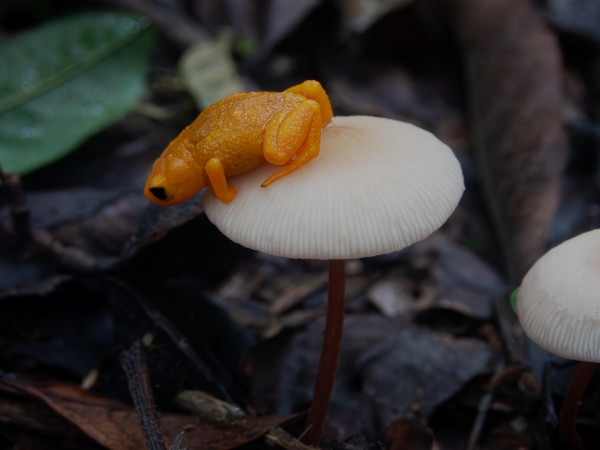Pumpkin toadlets are in trouble. Progressively severe droughts are disrupting the microbiomes of the thumbnail-sized orange frogs, potentially leaving them vulnerable to a deadly fungal disease, according to a new study by an international research team.
Pumpkin toadlets are in trouble. Progressively severe droughts are disrupting the microbiomes of the thumbnail-sized orange frogs, potentially leaving them vulnerable to a deadly fungal disease, according to a new study by an international research team. The finding suggests that abnormal rainfall patterns, which are expected to worsen due to climate change and deforestation, may upset mutually beneficial relationships between wildlife and microorganisms, leading to biodiversity decline.
The researchers, led by Penn State doctoral candidate Shannon Buttimer and Professor of Biology Guilherme Becker, published their findings in Ecology Letters. The work was featured on the cover of the journal’s January issue.
During a campaign to sample the skin bacteria of the pumpkin toadlets for his master’s thesis, co-author Diego Moura-Campos found nine dead or dying frogs. It was later confirmed that they had died of chytridiomycosis, a fungal disease caused by Batrachochytrium dendrobatidis (Bd), which is a threat to amphibian populations worldwide. Pumpkin toadlets, like many other amphibians, boast natural Bd-inhibiting bacteria on their skin. These microbes should help protect against the fungus, so why did these frogs die, and why all at once?
Read more at: Penn State University
PPumpkin toadlets naturally contain microbes that inhibit chytrid fungus. Researchers found that droughts can decrease these microbes, leaving the frogs vulnerable to infection and death. Credit: Shannon Buttimer / Penn State. Creative Commons




